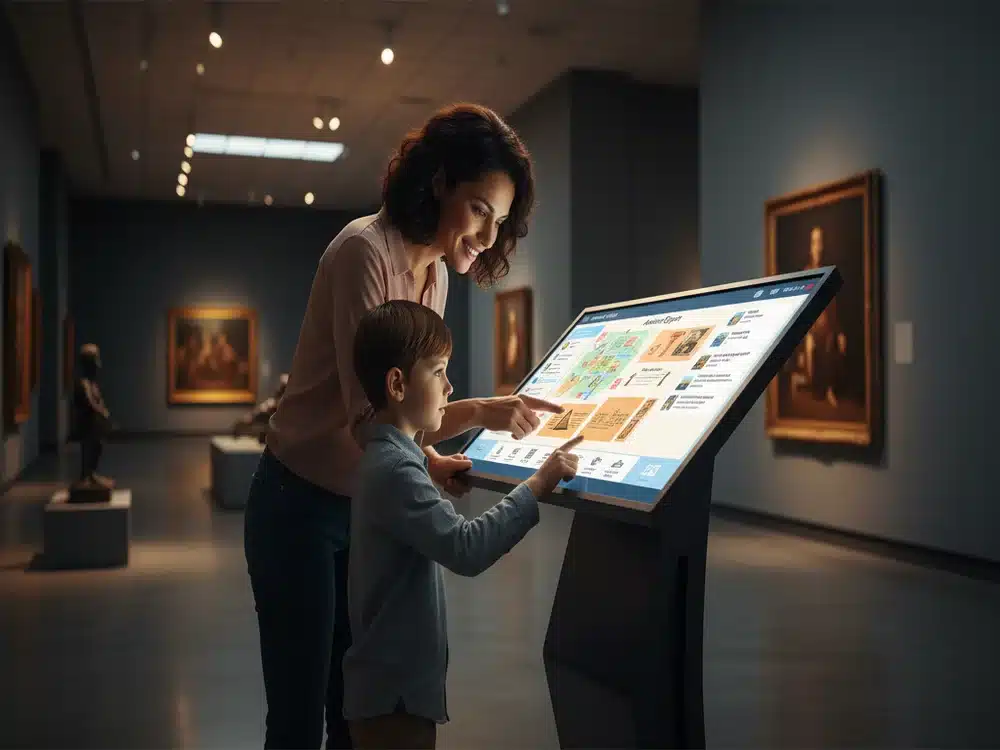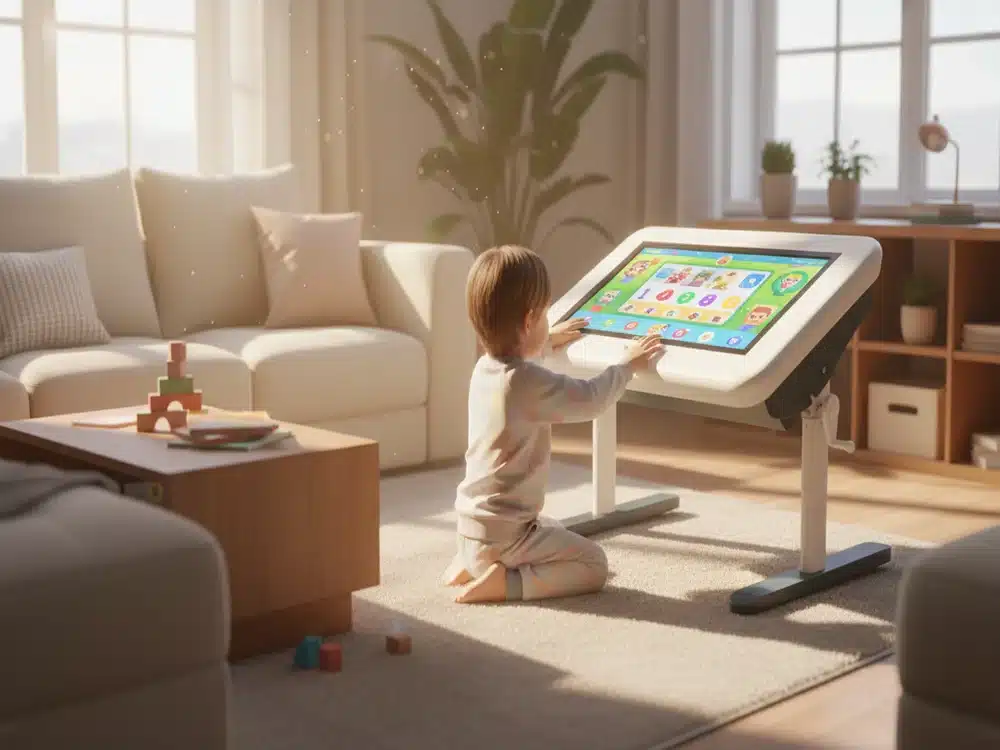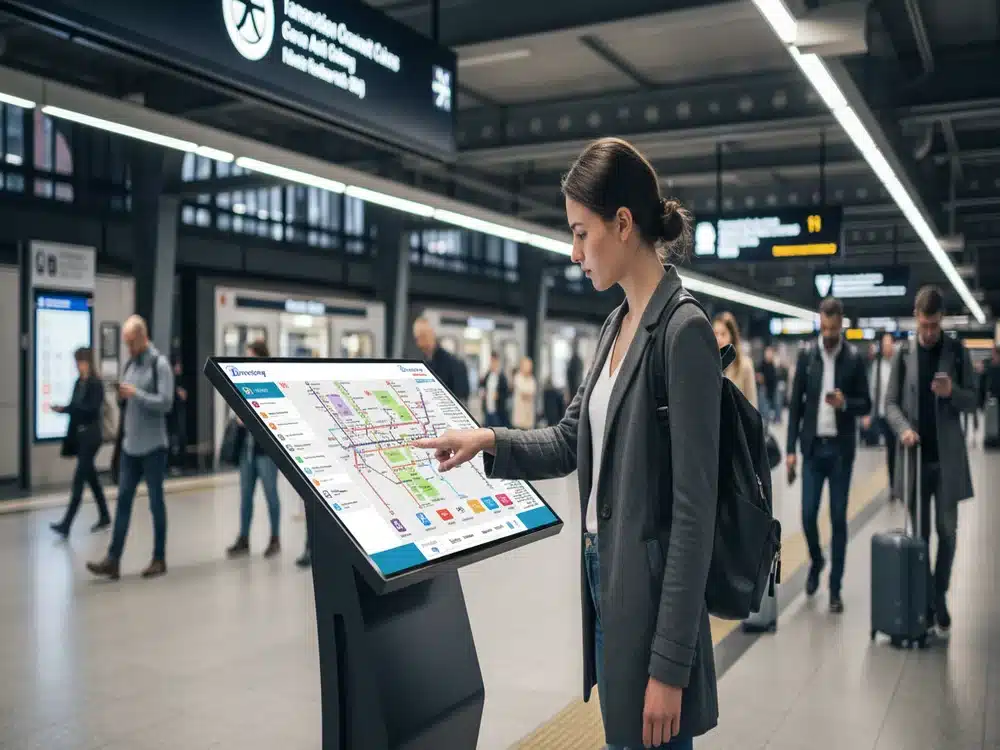How Touch Screen Technology is Revolutionizing the Digital Experience
The way we interact with technology has changed dramatically over the past two decades — and touch screen technology is at the center of that transformation. From smartphones and tablets to interactive smartboards and self-service kiosks, touch screens have reshaped communication, education, and business operations around the world.
In Malaysia, the adoption of touch screen technology is accelerating across schools, offices, and government sectors as part of the country’s digital transformation journey. With intuitive interaction, fast response times, and elegant design, touch-enabled systems have become essential tools for enhancing productivity, engagement, and user experience.
1. What Exactly Is Touch Screen Technology?
A touch screen is an electronic display that can detect touch input from fingers, styluses, or other objects. It combines display and control into one surface, removing the need for external peripherals like a keyboard or mouse.
There are several main types of touch screens used in today’s devices:
-
Resistive touch screens: Operate through pressure between two flexible layers, ideal for rugged environments.
-
Capacitive touch screens: Detect electrical conductivity, providing faster and smoother responses (commonly used in smartphones).
-
Infrared (IR) touch screens: Use invisible light beams across the screen surface to detect multiple touch points — often used in large displays like interactive smartboards.
Each technology serves specific needs depending on the device, purpose, and environment. For professional and educational settings, infrared touch technology is preferred for its high precision, durability, and multi-user functionality.
2. The Role of Touch Screen Technology in Education
One of the most significant impacts of touch screen innovation is seen in the education sector. Interactive touch screens have transformed classrooms into engaging, collaborative environments.
Traditional whiteboards are being replaced by smartboards that combine writing, drawing, and multimedia playback in one device. Teachers can annotate digital lessons, display videos, or conduct quizzes with just a touch — while students participate directly on the screen.
In Malaysia, the integration of touch screen smartboards in schools aligns with the Ministry of Education’s digital learning initiatives. Devices such as Arvia’s Smartboard ARV600 and ARV400 series are enabling interactive learning through advanced features like AI-assisted meeting summaries, camera tracking, and real-time annotation. These tools not only make learning more fun but also help educators manage lessons more efficiently.
3. Empowering Businesses with Interactive Displays
Touch screen technology is equally powerful in the corporate and commercial sectors. Businesses are using interactive displays for presentations, meetings, and training sessions — transforming the way teams collaborate.
A touch-enabled smartboard allows multiple users to brainstorm, draw, or manipulate data directly on screen. Integrated cameras and microphones make hybrid meetings seamless, especially with video conferencing apps such as Zoom or Microsoft Teams.
Additionally, digital signage displays powered by touch technology help businesses communicate more effectively with customers. From product catalogs and real-time dashboards to promotional content, these interactive systems capture attention and deliver information efficiently.
Arvia Solutions provides customized touch screen solutions for corporate offices, retail outlets, and government agencies — combining innovation with practical usability.
4. Self-Service and Public Accessibility
Another area where touch screen technology is thriving is public service and retail automation. Interactive touch screen kiosks are now common in shopping malls, hospitals, banks, and transportation hubs.
They offer self-service options such as ticket purchases, check-ins, wayfinding maps, and information directories. These kiosks improve service efficiency, reduce manpower needs, and enhance customer satisfaction by providing a fast, intuitive experience.
For example, a touch screen kiosk in a hospital can help patients locate departments, register appointments, and make payments without waiting in line. In shopping centers, customers can browse store directories or promotions at their own pace.
These advancements showcase how touch screen systems contribute to smarter, more connected cities — supporting Malaysia’s Smart City vision.
5. The Advantages of Using Touch Screen Technology
There are several reasons why organizations across industries are embracing touch-based solutions:
-
Ease of Use: No complicated setup or training is required — users interact naturally with touch gestures.
-
Time Efficiency: Faster operations lead to improved productivity in offices and classrooms.
-
Space-Saving Design: Combines input and output in a single sleek device.
-
Enhanced Engagement: Promotes participation and collaboration, making learning or meetings more dynamic.
-
Professional Image: Adds a modern, tech-forward impression in any environment.
-
Low Maintenance: High-quality touch screens, especially infrared types, are durable and require minimal upkeep.
These benefits make touch screen technology a preferred choice for modern digital environments.
6. The Future of Touch Screen Innovation
The evolution of touch screen technology continues to accelerate with the integration of AI, IoT, and gesture recognition. The next generation of devices may not even require direct contact — users could control systems using air gestures or voice commands.
In addition, haptic feedback is becoming more advanced, allowing users to “feel” virtual buttons or textures on a flat display. Touch screens are also being adapted for flexible and transparent materials, opening possibilities for futuristic designs in cars, architecture, and wearable devices.
With Malaysia’s growing focus on smart infrastructure and education technology, touch screen systems will remain a core component of digital transformation strategies for years to come.
Conclusion
Touch screen technology has revolutionized how humans interact with digital systems. Its intuitive design, versatility, and interactive features have made it a cornerstone of innovation in education, business, and public services.
From smart classrooms powered by Arvia Smartboards to self-service kiosks enhancing customer experiences, touch screen solutions are paving the way for a smarter, more connected Malaysia. As this technology continues to evolve, it will further blur the line between the physical and digital worlds — making every interaction faster, smarter, and more meaningful.







